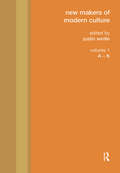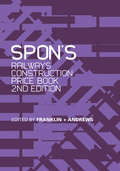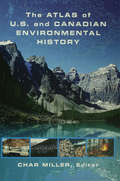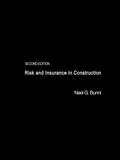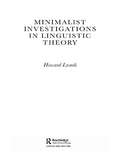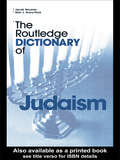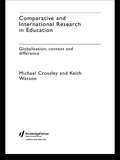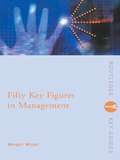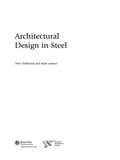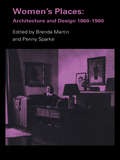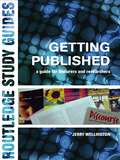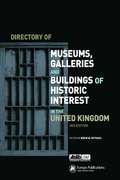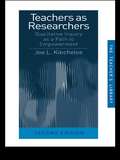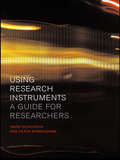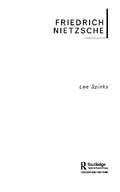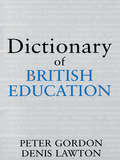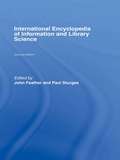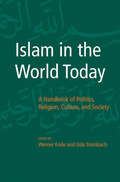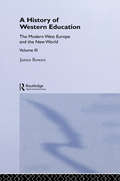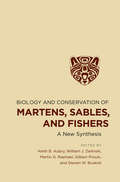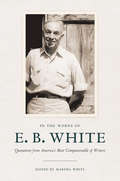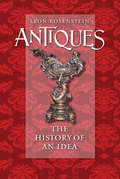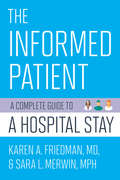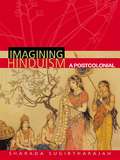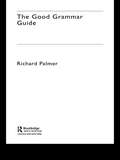- Table View
- List View
New Makers of Modern Culture
by Justin WintleNew Makers of Modern Culture is the successor to the classic reference works Makers of Modern Culture and Makers of Nineteenth-Century Culture, published by Routledge in the early 1980s. The set was extremely successful and continues to be used to this day, due to the high quality of the writing, the distinguished contributors, and the cultural sensitivity shown in the selection of those individuals included. New Makers of Modern Culture takes into full account the rise and fall of reputation and influence over the last twenty-five years and the epochal changes that have occurred: the demise of Marxism and the collapse of the Soviet Union; the rise and fall of postmodernism; the eruption of Islamic fundamentalism; the triumph of the Internet. Containing over eight hundred essay-style entries, and covering the period from 1850 to the present, New Makers of Modern Culture includes artists, writers, dramatists, architects, philosophers, anthropologists, scientists, sociologists, major political figures, composers, film-makers and many other culturally significant individuals and is thoroughly international in its purview. Next to Karl Marx is Bob Marley, next to John Ruskin is Salman Rushdie, alongside Darwin is Luigi Dallapiccola, Deng Xiaoping runs shoulders with Jacques Derrida as do Julia Kristeva and Kropotkin. Once again, Wintle has enlisted the services of many distinguished writers and leading academics, such as Sam Beer, Bernard Crick, Edward Seidensticker and Paul Preston. In a few cases, for example Michael Holroyd and Philip Larkin, contributors are themselves the subject of entries. With its global reach, New Makers of Modern Culture provides a multi-voiced witness of the contemporary thinking world. The entries carry short bibliographies and there is thorough cross-referencing. There is an index of names and key terms.
Spon's Railways Construction Price Book (Spon's Price Books)
by Franklin + AndrewsOver £6 billion is scheduled for investment in the UK's railway infrastructure over the next few years, with £1.2 billion committed to enhancement projects, £1.3 billion to infrastructure maintenance and £1.2 billion on track renewals. Significant investment is also planned in signalling, telecommunications, electrification, stations and depot buildings. Bidding for, winning and completing this work requires an accurate knowledge of the costs, work and resources involved. Spon's Railways Construction Price Book provides that knowledge. Any company looking to participate in the regeneration of the UK's railway network, will find the guidance provided here an essential strategic asset. Compiled from years of specialist experience, this book provides an understanding of the key drivers and components that affect the cost of railway projects. The first edition rapidly became essential reading for designers, engineers, surveyors, project managers, contractors and all those involved in the railway industry. This improved and extended second edition is destined to take its place.
The Atlas of U.S. and Canadian Environmental History
by Char MillerThis visually dynamic historical atlas chronologically covers American environmental history through the use of four-color maps, photos, and diagrams, and in written entries from well known scholars.Organized into seven categories, each chapter covers: agriculture * wildlife and forestry * land use and management * technology and industry * polluti
Risk and Insurance in Construction
by Nael G. BunniThose involved in construction have to cope with so much learning in their own discipline that they shun further involvement in subjects such as insurance and law which in themselves are so deeply and intensely complex. However, insurance and law are interwoven in the basic procedures used in the construction industry for undertaking work, be they design, construction, supervision or operation, or any combination of them. This thoroughly revised edition of Nael Bunni's successful book, formerly called Insurance in Construction, provides information on risk, construction law and construction insurance for those involved with all aspects of construction. The chapters on risk have been expanded to include recent developments in the area and provide further examples of events which could occur on what can be viewed as the most risky human work activity, namely construction. New chapters are also added to deal with the insurance clauses of the many new standard forms of contract published in recent years, including FIDIC's new suite of contracts published in September 1999, ICE's seventh edition of the civil engineering standard form of contract, and ICE's second edition of the design/build form.
Minimalist Investigations in Linguistic Theory (Routledge Leading Linguists #No.8)
by Howard LasnikProfessor Howard Lasnik is one of the world's leading theoretical linguists. He has produced influential and important work in areas such as syntactic theory, logical form, and learnability. This collection of essays draws together some of his best work from his substantial contribution to linguistic theory.
The Routledge Dictionary of Judaism (Routledge Dictionaries)
by Alan Avery-Peck Jacob NeusnerCompiled by two internationally renowned experts, and with over 600 wide-ranging and informative entries, The Routledge Dictionary of Judaism provides the reader with an invaluable reference aid to all areas of the religion. Topics covered include:*The religion's forms and history*Its institutions, religious practices and life cycle rites *Key texts and people, symbols and holy days*An understanding of theological terms, doctrine and philosophy.
Comparative and International Research In Education: Globalisation, Context and Difference (Bristol Papers In Education: Comparative And International Studies)
by Michael Crossley Keith WatsonFrom the foreword: This book is a major contribution to the field of comparative and international education. It has been co-authored by two distinguished figures, who write with authority and clarity, and who present conceptual insights which add creative and intellectual vitality to the field at a time of major change and development.Changing geopolitical relations, the acceleration of globalisation and major advances in information and communication technology have all transformed and revitalised international and comparative research in education. This multidisciplinary book critically examines the implications of this change for those engaged in such work worldwide. Groundbreaking and insightful, it draws on the latest research and developments in the field to give a comprehensive overview and analysis of the contemporary condition of this valuable form of research.Drawing upon the authors' extensive international experience, the text:* Re-assesses the diverse and multidisciplinary origins of this field of study:* Documents the increased orientation towards research;* Explores the changing nature of the problems and issues faced by both new and experienced researchers;* Puts forward a coherent and well-informed case for a thorough reconceptualisation of the field as a whole.The book argues eloquently for increased cultural and contextual sensitivity in educational research and development in order that the field might make a more effective contribution to educational theory, policy and practice. This multidisciplinary work will be welcomed by a wide range of theorists and researchers in education and the social sciences, as well as teachers, policymakers and anyone concerned with improving dialogue and understanding across cultures and nations.
Fifty Key Figures in Management (Routledge Key Guides)
by Morgen WitzelFifty Key Figures in Management is a collection of biographies of fifty people who have helped to make management what it is today - through their ideas, writings and teachings, through practical example and leadership, or both. Featuring business leaders such as Henry Ford, Jack Welch and Bill Gates, all of whom were pioneers in business pratice, the book also includes thinkers and consultants who have helped to redefine the way we think about management, such as Ohmae Kenichi, Fukuzawa Yukichi, Tom Peters and Charles Handy. Moreover, new and emerging aspects of management are covered through the inclusion of such cutting-edge thinkers as Arie de Geus, Max Boisot and Nonaka Ikujiro. Taken together, the fifty biographies presented here described how management emerged as a modern discipline and grew into its present form. Organization, strategy, marketing, production management, human resource management and knowledge management all come together to show how management is a multi-faceted discipline.
Architectural Design in Steel
by Mark Lawson Peter TrebilcockSteelwork offers the opportunity for architectural expression, as well as being structurally versatile and adaptable material. Good detailing is vital because it affects structural performance, costs, buildability and, perhaps most importantly, appearance. Whilst the choice of the structural form is often the province of the structural engineer, architects should have a broad appreciation of the factors leading to the selection of the structure and its details. Traditionally, most detailing of connections is the responsibility of the steelwork fabricator, but for exposed steelwork, detailing is of much more interest to the architect, as it impacts on the aesthetics of the structure. In this respect it is important that designers appreciate the common fabrication and erection techniques which may exert a strong influence on the method and approach to the detailing of modern steelwork in buildings. Architectural Design in Steel is a design guide to the detailing of exposed steelwork in buildings. It is a guide which offers technical guidance and general principles, as well as examples of best practice. It covers all aspects from manufacture to detailing, specification of finishes and fabrication, providing architects, as well as engineers, with essential information to inform the design.
Women's Places: Architecture and Design 1860-1960
by Brenda Martin Penny SparkeWhat was different about the environments that women created as architects, designers and clients at a time when they were gaining increasing political and social status in a male world? Through a series of case studies, Women's Places: Architecture and Design 1860-1960, examines in detail the professional and domestic spaces created by women who had money and the opportunity to achieve their ideal. Set against a background of accepted notions of modernity relating to design and architecture of the late 19th and early 20th centuries, this book provides a fascinating insight into women's social aspirations and identities. It offers new information and new interpretations in the study of gender, material culture and the built environment in the period 1860-1960.
Getting Published: A Guide for Lecturers and Researchers
by Jerry WellingtonThis handy guide for new and practising lecturers and researchers takes a rare insider's look at the activities of writing and publishing. Turning the spotlight inwards, it examines how and why professionals communicate with each other through writing and publishing.Written with great verve and pace, the author succeeds in providing sensible advice bolstered by many illustrative examples, case studies and anecdotes. For the academic needing insight into the serious business of getting published, this book will provide answers to many of their frequent questions:* Why do they write and publish?* Who are they writing for?* What channels of communication are available for their writing?* Who 'controls' these channels?* How can they successfully submit articles and papers to journals and newspapers, contribute chapters to books, or approach publishers with book proposals?Developed from a series of seminars on the subject by the author, this book will be an enjoyable and informative guide to anyone with an interest in getting their work published.
Directory of Museums, Galleries and Buildings of Historic Interest in the UK
by Keith W. ReynardThis unique and important directory incorporates some 3,200 entries.It covers all types and sizes of museums; galleries of paintings, sculpture and photography; and buildings and sites of particular historic interest. It also provides an extensive index listing over 3,200 subjects. The directory covers national collections and major buildings, but also the more unusual, less well-known and local exhibits and sites. The Directory of Museums, Galleries and Buildings of Historic Interest in the United Kingdom is an indispensable reference source for any library, an ideal companion for researcher and enthusiast alike, and an essential purchase for anyone with an interest in the cultural and historical collections of the UK.Features include:* Alphabetically listed entries, which are also indexed by subject for ease of reference * Entries include the name and address of the organization, telephone and fax numbers, email and internet addresses, a point of contact, times of opening and facilities for visitors* A breakdown of the collections held by each organization, giving a broad overview of the main collection as a whole* Details of special collections are provided and include the period covered as well as the number of items held.
Teachers as Researchers: Qualitative Inquiry as a Path to Empowerment (Teachers' Library)
by Joe L. KincheloeThis book urges teachers - as both producers and consumers of knowledge - to engage in the debate about educational research by undertaking meaningful research themsleves. Teachers are now being encouraged to carry out research in order to improve their effectiveness in the classroom, but this book suggests that they also reflect on and challenge the reductionist and technicist methods that promote a 'top down' system of education. The author, a leading proponent of qualitative research, argues that only by engaging in complex, critical research will teachers rediscover their professional status, empower their practice in the classroom and improve the quality of education for their pupils. Postgraduate students of education and experienced teachers will find much to inspire and encourage them in this book. Updated and revised for this new edition, it retains both its clarity and insistence on sound research practice. Joe L. Kincheloe is Professor of Education at the City University of New York Graduate Center and Brooklyn College. he is the author and editor of many books on critical pedagogy and qualitative research in education. Series Editor: Ivor F. Goodson.
Using Research Instruments: A Guide for Researchers (Routledge Study Guides)
by Peter Birmingham David WilkinsonClear, accessible and practical, this guide introduces the first-time researcher to the various instruments used in social research. It assesses a broad range of research instruments - from the well-established to the innovative - enabling readers to decide which are particularly well suited to their research.The book covers: questionnaires interviews content analysis focus groups observation researching the things people say and do. This book is particularly suitable for work-based and undergraduate researchers in education, social policy and social work, nursing and business administration. It draws numerous examples from actual research projects, which readers can adapt for their own purposes. Written in a fresh and jargon-free style, the book assumes no prior knowledge and is firmly rooted in the authors' own extensive research experience.Using Research Instruments is the ideal companion volume to The Researcher's Toolkit. Together they offer a superb practical introduction to conducting a social research project.
Friedrich Nietzsche (Routledge Critical Thinkers)
by Lee SpinksIt is difficult to imagine a world without common sense, the distinction between truth and falsehood, the belief in some form of morality or an agreement that we are all human. But Friedrich Nietzsche did imagine such a world, and his work has become a crucial point of departure for contemporary critical theory and debate. This volume introduces this key thinker to students of literary and cultural studies, offering a lucid account of Nietzsche's thought on:* anti-humanism* good and evil* the Overman* nihilism* the Will to Power.Lee Spinks prepares readers for their first encounter with Nietzsche's most influential texts, enabling them to begin to apply his thought in studies of literature, art and contemporary culture.
Dictionary of British Education (Woburn Education Series)
by Professor Peter Gordon Peter Gordon Professor Denis Lawton Denis LawtonThis is an up-to-date guide for teachers and parents, administrators, governors , students and others to help the find their way about the increasingly complex world of education. The main section provides a dictionary that is more than a simple set of definitions: many words in education have been put into some kind of historical context to become fully meaningful. The second part gives some important landmarks from the nineteenth century to the present time, and also provides a list of political heads of education since state education was established. The final section is devoted to a list of acronyms and abbreviations, both of which have been the subject of multiple definitions in recent years.
International Encyclopedia of Information and Library Science
by John Feather Paul SturgesThe International Encyclopedia of Information and Library Science was published to widespread acclaim in 1996, and has become the major reference work in the field. This eagerly awaited new edition has been fully revised and updated to take full account of the many and radical changes which have taken place since the Encyclopedia was originally conceived. With nearly 600 entries, written by a global team of over 150 contributors, the subject matter ranges from mobile library services provided by camel and donkey transport to search engines, portals and the World Wide Web.The new edition retains the successful structure of the first with an alphabetical organization providing the basic framework of a coherent collection of connected entries. Conceptual entries explore and explicate all the major issues, theories and activities in information and library science, such as the economics of information and information management. A wholly new entry on information systems, and enhanced entries on the information professions and the information society, are key features of this new edition. Topical entries deal with more specific subjects, such as collections management and information services for ethnic minorities. New or completely revised entries include a group of entries on information law, and a collection of entries on the Internet and the World Wide Web.
Islam in the World Today: A Handbook of Politics, Religion, Culture, and Society
Considered the most authoritative single-volume reference work on Islam in the contemporary world, the German-language Der Islam in der Gegenwart, currently in its fifth edition, offers a wealth of authoritative information on the religious, political, social, and cultural life of Islamic nations and of Islamic immigrant communities elsewhere. Now, Cornell University Press is making this invaluable resource accessible to English-language readers. More current than the latest German edition on which it is based, Islam in the World Today covers a comprehensive array of topics in concise essays by some of the world's leading experts on Islam, including:• the history of Islam from the earliest years through the twentieth century, with particular attention to Sunni and Shi'i Islam and Islamic revival movements during the last three centuries;• data on the advance of Islam along with current population statistics;• Muslim ideas on modern economics, on social order, and on attempts to modernize Islamic law (shari'a) and apply it in contemporary Muslim societies;• Islam in diaspora, especially the situation in Europe and America;• secularism, democracy, and human rights; and• women in IslamTwenty-four essays are each devoted to a specific Muslim country or a country with significant Muslim minorities, spanning Asia, Africa, the Middle East, and the former Soviet Union. Additional essays illuminate Islamic culture, exploring local traditions; the languages and dialects of Muslim peoples; and art, architecture, and literature. Detailed bibliographies and indexes ensure the book's usefulness as a reference work.
Hist West Educ: Vol. Iii, The Modern West, Europe And The New World
by James BowenFirst Published in 2003. Routledge is an imprint of Taylor & Francis, an informa company.
Biology and Conservation of Martens, Sables, and Fishers: A New Synthesis
by Steven W. Buskirk Martin G. Raphael Keith B. Aubry William J. Zielinski Gilbert ProulxMammals in the genus Martes are mid-sized carnivores of great importance to forest ecosystems. This book, the successor to Martens, Sables, and Fishers: Biology and Conservation, provides a scientific basis for management and conservation efforts designed to maintain or enhance the populations and habitats of Martes species throughout the world. The twenty synthesis chapters contained in this book bring together the perspectives and expertise of 63 scientists from twelve countries, and are organized by the five key themes of evolution and biogeography, population biology and management, habitat ecology and management, research techniques, and conservation.Recent developments in research technologies such as modeling and genetics, biological knowledge about pathogens and parasites, and concerns about the potential effects of global warming on the distribution and status of Martes populations make new syntheses of these areas especially timely. The volume provides an overview of what is known while clarifying initiatives for future research and conservation priorities, and will be of interest to mammalogists, resource managers, applied ecologists, and conservation biologists.
In the Words of E. B. White: Quotations from America's Most Companionable of Writers
by E. B. White"The time not to become a father is eighteen years before a world war."—E. B. White on fatherhood"I was lucky to be born abnormal. It ran in the family."—on luck"I would really rather feel bad in Maine than feel good anywhere else." —on Maine"The English language is always sticking a foot out to trip a man."—on language The author of Charlotte's Web and One Man's Meat, coauthor of The Elements of Style, and columnist for The New Yorker for almost half a century, E. B. White (1899–1985) is an American literary icon. Over the course of his career, White inspired generations of writers and readers with his essays (both serious and humorous), children's literature, and stylistic guidance. In the Words of E. B. White offers readers a delightful selection of quotations, selected and annotated by his granddaughter and literary executor, Martha White. The quotations cover a wide range of subjects and situations, from Automobiles, Babies, Bees, City Life, and College to Spiders, Taxes, Weather, Work, and Worry. E. B. White comments on writing for children, how to tell a major poet from a minor one, and what to do when one becomes hopelessly mired in a sentence. White was apt to address the subject of security by speaking first about a Ferris wheel at the local county fair, or the subject of democracy from the perspective of roofing his barn and looking out across the bay—he had a gift for bringing the abstract firmly into the realm of the everyday. Included here are gems from White's books and essay collections, as well as bits from both published and unpublished letters and journals. This is a book for readers and writers, for those who know E. B. White from his "Notes and Comment" column in The New Yorker, have turned to The Elements of Style for help in crafting a polished sentence, or have loved a spider's assessment of Wilbur as "Some Pig." This distillation of the wit, style, and humanity of one of America's most distinguished essayists of the twentieth century will be a welcome addition to any reader's bookshelf.
Antiques: The History of an Idea
by Leon RosensteinThe notion of retrieving a bit of the past-by owning a material piece of it-has always appealed to humans. Often our most prized possessions are those that have had a long history before they came into our hands. Part of the pleasure we gain from the encounter with antiques stems from the palpable age and the assumed (sometimes imaginary) cultural resonances of the particular object. But precisely what is it about these objects that creates this attraction? What common characteristics do they share and why and how do these traits affect us as they do? In Antiques: The History of an Idea, Leon Rosenstein, a distinguished philosopher who has also been an antiques dealer for more than twenty years, offers a sweeping and lively account of the origin and development of the antique as both a cultural concept and an aesthetic category. He shows that the appeal of antiques is multifaceted: it concerns their value as commodities, their age and historical and cultural associations, their uniqueness, their sensuous and tactile values, their beauty. Exploring how the idea of antiques evolved over time, Rosenstein chronicles the history of antique collecting and connoisseurship. He describes changing conceptions of the past in different epochs as evidenced by preservations, restorations, and renascences; examines shifting attitudes toward foreign cultures as revealed in stylistic borrowings and the importation of artifacts; and investigates varying understandings of and meanings assigned to their traits and functions as historical objects.While relying on the past for his evidence, Rosenstein approaches antiques from an entirely original perspective, setting history within a philosophical framework. He begins by providing a working definition of antiques that distinguishes them from other artifacts in general and, more distinctly, both from works of fine art and from the collectible detritus of popular culture. He then establishes a novel set of criteria for determining when an artifact is an antique: ten traits that an object must possess in order to elicit the aesthetic response that is unique to antiques. Concluding with a provocative discussion of the relation between antiques and civilization, this engaging and thought-provoking book helps explain the enduring appeal of owning a piece of the past.
The Informed Patient: A Complete Guide to a Hospital Stay (The Culture and Politics of Health Care Work)
by Karen A. Friedman Sara L. MerwinEven the most capable individuals are challenged when confronted with the complexity of the modern hospital experience. The Informed Patient is a guide and a workbook, divided into topical, focused sections with step-by-step instructions, insights, and tips to illustrate what patients and their families can expect during a hospital stay. Anyone who will experience a hospital stay—or friends or family who may be in charge of a patient’s care—will find all the help and advice they could need in the detailed sections that cover every aspect of what they can expect.Karen A. Friedman, MD, and Sara L. Merwin, MPH, offer hands-on advice about how patients, health care providers, and medical staff can work together to achieve good outcomes. Through anecdotes, tips, sidebars, and clinical scenario vignettes, The Informed Patient presents ways to enhance and optimize a hospital stay, from practical advice on obtaining the best care to dealing with the emotional experience of being in the hospital.
Imagining Hinduism: A Postcolonial Perspective
by Sharada SugirtharajahImagining Hinduism examines how Hinduism has been defined, interpreted and manufactured through Western categorizations, from the foreign interventions of eighteenth and nineteenth-century Orientalists and missionaries, to the present day. Sugirtharajah argues that ever since early Orientalists 'discovered' the ancient Sanskrit texts and the Hindu 'golden age', the West has nurtured a complex and ambivalent fascination with Hinduism, ranging from romantic admiration to ridicule. At the same time, Hindu discourse has drawn upon Orientalist representations in order to redefine Hindu identity.As the first comprehensive work to bring postcolonial critique to the study of Hinduism, this is essential reading for those seeking a full understanding of Hinduism.
The Good Grammar Guide (Routledge Study Guides Ser.)
by Richard PalmerDoes grammar bother you? Does it first inspire boredom, then fear? Since the virtual removal of formal grammar teaching from our schools' standard curriculum forty years ago, such negative responses have increasingly characterised students and professionals alike. As this lively and user-friendly book sets out to prove, that is both unfortunate and unnecessary. Not only is grammar an enabling servant rather than a tyrannical set of absolute rules: it can also be fun. This light-hearted guide offers extensive coverage of Parts of Speech, Syntax, Inflection and Punctuation, along with a detailed look at common errors and misconceptions. Regular exercises are included, as is a baleful survey of Political Correct usage, whose desire to sanitize and control the way we speak is injurious to grammar, language itself and indeed the way we live now. The aim throughout this book is to reassure and entertain as well as instruct. This handy volume puts an amusing light on grammar, and as such it is guaranteed to banish boredom and fear. The Good Grammar Guide can also be read as a companion to one of Richard Palmer's other publications, Write in Style 2nd Edition, also published in Routledge's Study Guides series.
